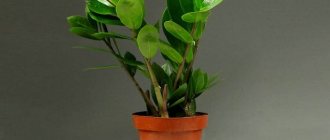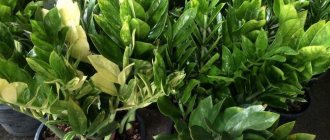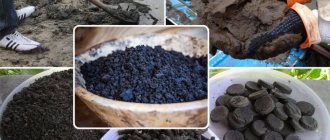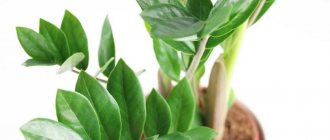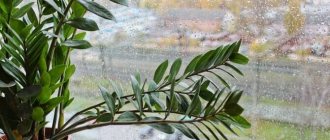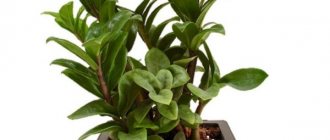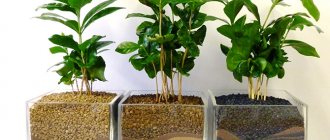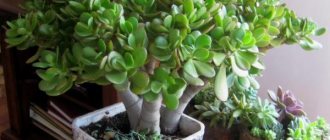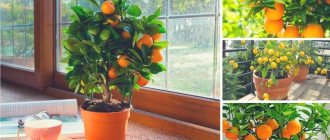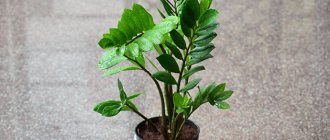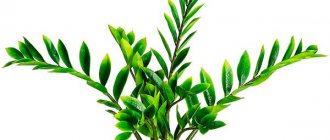Our advice will be useful to owners of Zamioculcas, as well as to those who are just planning to have a “money” pet. You will see that this plant does not require complex care. And we will tell you how to create favorable conditions for him.
Zamioculcas stands out among other indoor plants with its neat crown, impressive size and rich green color of leaves. But they love him not only for his spectacular appearance. There is a belief among flower growers that Zamioculcas helps its owners attract dollars. Therefore, along with the crassula (money tree), it took pride of place in many homes.
Meanwhile, not everyone knows how to properly care for a plant. Usually, it all comes down to the fact that Zamioculcas is unpretentious. But there are some features in caring for it.
Zamioculcas - description of the plant
Do you know plants such as monstera, dieffenbachia, syngonium or anthurium? So, Zamioculcas is a close relative of them and also belongs to the Araceae family. It began to be grown as a houseplant only at the end of the last century. And the wild relative of Zamioculcas, originally from tropical Africa, was first described in the first half of the 19th century.
Zamioculcas got its name from its resemblance to the Zamia plant from the cycad genus. By the way, zamia is common in America, on another continent, and it is also grown at home.
The common species in indoor culture is Zamioculcas zamiifolia.
Why did the plant attract flower growers so much? If you look at it carefully, you will notice that Zamioculcas is very unusual. Its thick stems are densely covered with glossy leathery leaves, sometimes resembling luxurious fans. The tubers of the plant are dense, but at the same time fragile. The dollar tree blooms very rarely and only in adulthood. The flower resembles an ear of corn, is rather inconspicuous and short-lived. So they grow the plant more for its greenery.
All parts of the plant are able to accumulate moisture, so Zamioculcas tolerates drought well. But the better the growing conditions of the flower, the juicier and brighter it will be.
Zamioculcas contains poisonous juice that can be dangerous for children, animals and allergy sufferers. When replanting, pruning, and propagating flowers, wear gloves. Make sure that the juice does not get on the skin and mucous membranes. In case of contact, rinse the affected area with plenty of water.
Description of the flower
Zamioculcas (Dollar Tree) has an unusual structure. So, it has neither a trunk nor branches. A complex leaf appears from the ground, the formation of which occurs from the rhizome.
The root of the flower is a large tuber with thick processes resembling worms (this is clearly visible in the photo of Zamioculcas). The rhizome is so strong that if there is not enough space for it in the pot, it can break through it. The tuber is important for the growth and development of the crop - it accumulates and retains moisture.
Interesting!
The plant got its name from the gymnosperm flower Zamia, which it is so similar to.
Dollar Tree has straight, glossy leaves. Their length is on average 0.5 m. They are complexly porous and divided into 8-12 dense leaves-feathers.
The culture grows slowly - several leaves are formed on it per year. The growth is no more than 10-15 cm. If you provide it with proper care, it can reach a height of 1 m and this is not the limit. If a flower experiences a lack of moisture, it can shed its leaves to reduce the evaporation of liquid.
A dollar tree can live in indoor conditions for at least 5 years.
What to do with Zamioculcas after purchase
To preserve the decorative appearance of zamioculcas, you need to properly care for it from the moment of purchase. Despite the temptation to immediately transplant the plant into a beautiful flowerpot, do not rush, but let the flower get used to the new conditions. By the way, it is better to buy a plant in the warm season so that it does not freeze on the way home.
When the plant has settled into its new room, after about 2-4 weeks, you can carefully transfer it into the pot along with the old lump of earth, and fill the gaps with fresh soil. This will reduce the stress of the procedure.
Choose a pot for transferring according to the size of the plant. The diameter of the new container should be 3-4 cm larger than the previous one. Ceramic and clay pots are suitable. It is better not to use plastic ones, because... the roots of the plant can break through them. The ideal shape of the pot is narrowed downwards. The container must have holes for water drainage.
Some gardeners, on the contrary, prefer plastic containers, because it is difficult to remove the plant from ceramic ones in the future. If you also love plastic pots, feel free to use them for transfer. Just make sure that the plant does not grow too much, and carry out a new transshipment in time.
In order for the dollar tree to recover faster after transplantation, adhere to the following rules:
- use light and fertile soil;
- be sure to make drainage using expanded clay, clay shards or broken bricks;
- do not bury the roots completely into the soil; they should protrude about 1 cm above the soil surface;
- do not shake off the soil from the earthen clod.
Be sure to wear gloves while working, as... Zamioculcas juice is poisonous.
The plant cannot be watered immediately after the procedure, otherwise it will die. Do this after about 7-10 days, when the zamioculcas adapts to the new pot. The first watering should completely wet the earthen ball. Drain the water that has drained into the pan. Next time, water the flower when the soil dries well.
Zamioculcas care: in detail
The plant does not require special care and is ideal for those gardeners who forget about their green pets and cannot pay much attention to them.
When growing zamioculcas, pay special attention to selecting the soil, maintaining the temperature regime, and allowing the soil to dry well after watering.
Also about caring for Zamioculcas in this video:
Bloom
The inflorescence reaches 3-5 cm in height and 1 cm in diameter. The Zamioculcas flower grows from the ground itself and can be so inconspicuous that it is difficult to see among the leaves. The flowering period is from April to October.
dollar tree flower
Zamioculcas blooms very rarely. Seed setting does not occur even during pollination, so it is recommended to remove the inflorescences at the beginning of flowering. Interestingly, the plant most often begins to bloom only at the end of its life. On average, it lives at home for about 10 years.
Temperature
In summer it can withstand temperatures from +22º to +28º, in winter it is advisable to move the plant to a cooler place and maintain a temperature of +16º - +18º.
In general, the plant can withstand temperatures from +12º to +38º. Zamioculcas is heat-loving and does not tolerate sudden temperature changes - it is advisable to try to maintain a stable regime.
Watering
Does not tolerate excessive watering and high humidity indoors. However, if it is overdried, its leaves may turn yellow. For irrigation, use water that has been standing for at least a day, always at room temperature.
You can water with cooled boiled water. When watering, it is important to make sure that the water goes through the entire pot. However, it is necessary to drain the water from the pan after 1-2 hours to avoid rotting of the roots. In the warm season, water once a week; in the cold season, reduce watering to once a month.
With Zamioculcas it is better not to top up than to overfill. It does not tolerate waterlogging very well.
Daria Sumarokova, amateur florist
Spraying
Zamioculcas can simply be wiped with a soft damp cloth. You can periodically give him a warm shower.
Lighting
Tolerates bright lighting and light shading; the best option for it is diffused light. When exposed to direct sunlight, burns appear on the plant. It is possible to use a phytolamp to ensure that the plant has enough light.
Where to put Zamioculcas
An east, west or southeast window is ideal. It feels good on a south window if it is darkened. It will be difficult to grow in a north window: from lack of lighting, the leaves turn pale, and the branches become elongated and thin. The room should be well ventilated, but in winter it is important to avoid drafts. In the warm season, you can take it outside or onto the balcony.
Pot for Zamioculcas
For the first time, a plastic pot is suitable, which can be easily cut without damaging the roots during replanting. In the future, it is advisable to choose a ceramic pot with a diameter 3-4 cm larger than the root system.
There must be drainage holes in the bottom. A tall, narrow pot is ideal for this flower. It's all about the characteristics of the plant: it produces new arrows only when the roots rest against the walls of the pot.
To make the flower produce new arrows faster, in the spring it can be watered with water slightly above room temperature.
Soil for dollar tree
It is advisable to purchase special soil for cacti and succulents. However, you can prepare the soil at home. To do this, mix garden soil and peat in half with the addition of perlite.
Zamioculcas is suitable for soil for cacti
When preparing the soil yourself, it is necessary within 30 minutes. bake it in the oven, or leave it in the freezer for a day to get rid of parasites and fungi. The soil should be light, well permeable to water and air.
It is not advisable to choose ready-made soil for deciduous plants: it may not be suitable for zamioculcas: such soil retains moisture better, which leads to rotting of the root system.
Does Zamioculcas need feeding?
You can fertilize the plant from May to September. We use special fertilizer for cacti and succulents, but use only a third of the amount specified in the instructions . Zamioculcas is fertilized once a month.
Cactus fertilizer is suitable for the castle
How often to replant
A castle up to three years old can be replanted as planned every spring, an adult - every 2-4 years.
To understand that it’s time to choose a new pot for an adult flower, you need to look at its roots: if they appear from the drainage holes, it’s time to think about replanting.
This is done by the transfer method: you cannot shake off the soil from the roots, otherwise you can ruin the plant.
We leave the roots sticking out of the ground a little. After transplanting, refrain from watering for 2 weeks.
Zamioculcas needs an unscheduled transplant after purchase, when the plant becomes cramped in the pots, or if it has lost its beauty: the leaves have turned yellow and began to fall off, the flower withers.
Trimming
The flower grows up to 1 m in length, so it can be trimmed to make it look presentable. This is also done to rejuvenate, propagate the plant or treat it if it is sick.
We carry out the manipulation in spring or summer. If you prune it in winter, when the plant is not growing in size, its appearance may deteriorate.
Zamioculcas grows very slowly, so there is no need to prune it in the first few years. If the purpose of pruning is to rejuvenate the plant, it is enough to remove yellowed and dry leaves. To form a beautiful crown, we thin out the young and stopped growing fragments of the leaf.
When pruning, you can get rid of entire branches, the main thing is not to cut them at the root, but to leave small stumps. The cutting areas must be dried and treated with activated carbon powder.
Important: after the procedure, do not move the plant and do not water it for a week.
Zamioculcas does not need to be shaped by pruning. After purchasing, you can immediately select a phytolamp for it, and then it will not stretch above the adjusted height.
How unpretentious is Zamioculcas?
The flower requires virtually no care, especially in winter. The less attention you pay to him at this time, the healthier and more beautiful he will grow up. During the cold season, you can safely go on vacation, leaving the plant without care even for a whole month.
Rejuvenation
Zamioculcas is rejuvenated by dividing the old large bush into several smaller ones. During this procedure, old, unsightly branches are also pruned.
When you need support
The leaves are quite heavy and the branches can fall apart under their own weight. Therefore, the plant must be tied up using a ring support, which is made of elastic tape, wood or solid wire. Young, weak branches especially need support.
To do this, we use ordinary thin sticks to which we tie zamioculcas shoots. To install a ring support, we also insert several twigs along the edge of the pot and wrap them around a ring prepared in advance so that the branches of the plant do not fall apart in different directions.
To make the plant look more aesthetically pleasing, you can build a support for it
Features of growing zamioculcas at home
The conditions for growing a dollar tree are quite simple. You will find basic information in our infographic. Save it so you always have it on hand!
Zamioculcas loves light and warmth, so it will feel good on western or eastern window sills and balconies. You can place the flower on the south side, but then provide it with good shading so that burns do not appear on the leaves. The plant will survive on a northern windowsill, in the shade, but may lose its rich green color. In summer he will enjoy “relaxing” in the garden or on the veranda. In winter, Zamioculcas often lacks light, so give it a place on the brightest windowsill.
How to water Zamioculcas
Water zamioculcas sparingly. The main rule: it is better not to top up than to overfill. From spring to autumn, make sure that water does not stagnate in the pan. In winter, water the plant as the soil dries to avoid rotting of the tuber and roots. Water only with warm, settled water, because... Zamioculcas does not like cold or even cool temperatures.
Despite the fact that zamioculcus stores water, you should not overdry it, otherwise the plant will shed its tops and lose its decorative appearance. Prolonged dryness can also cause spider mite infestation.
Wipe off dust on the leaves with a cloth as needed or give the zamioculcas a warm shower once a month.
As for spraying, it can only be carried out at very high air temperatures. The rest of the time, it is not advisable to do this, so as not to provoke yellowing of the leaves. To increase humidity, it is better to spray the air around the flower or place a container of water next to it.
How to feed Zamioculcas
The dollar tree quickly takes nutrients from the soil and will respond gratefully to regular feeding. During the growth period, from April to September, 1-2 procedures per month are sufficient. From October to March there is no need to fertilize the plant. The basic rule of fertilizing is the same as when watering: less is better than more.
Use ready-made store-bought preparations, for example, universal ones or for cacti and succulents. For Zamioculcas, half the concentration of the solution is enough. Water at the roots. You can also spray the flower with a urea solution (1 g per 1 liter of water) once a month.
If you have just transplanted a young plant, do not feed it until new leaves appear.
Dollar tree propagation rules
Zamioculcas - reproduction at home
The main part of the plant is not the outer stems with leaves, but the underground tubers. For a plant to grow well in a new pot, its volume should be only slightly larger than the size of the tuber itself, but a thick layer of drainage is required at the bottom.
Note! Drought-resistant Zamioculcas dies when overwatered.
The optimal air humidity is in the range of 30-60%, so the atmosphere of heated rooms suits the succulent well.
Selecting suitable soil and arranging drainage
You can prepare the soil mixture for planting yourself by mixing turf soil with peat and sand in equal proportions. Ready-made soil for cacti and succulents is suitable. A high-quality substrate is loose, breathable, and has a pH of 5.5-6.5.
This is the approximate proportion between the volumes of soil and drainage
It is advisable to take a ceramic pot, since growing leaves can topple a plastic one that is too light. There must be holes at the bottom for drainage of water, which is drained from the pan each time after watering. Drainage made of small expanded clay, broken bricks or small pebbles is poured approximately 1/4 of the height of the pot.
Providing warmth and bright diffused lighting
The air temperature all year round should be constant within +18..+26 °C. Equally critical for this succulent are: hypothermia below +15 °C and overheating above +38 °C.
The African plant loves bright light, but continues to grow in partial shade. Window sills on south and south-east windows are ideal for the pot.
The more light the leaves receive, the larger and brighter they will grow. In the hottest summer months, leaves on a south-facing window can get burned, so they are slightly shaded with tulle or blinds.
Note! With a lack of sunlight, the shoots stretch upward and become thinner.
How to trim zamioculcas
flowers.bitrix.ru
Despite its slow growth, zamioculcas requires regular crown formation and thinning. Otherwise, some of the leaves will not receive enough light and will turn yellow. Bare branches will not add decorative value to the flower. And if you prune regularly, you will get a luxurious green decoration for your interior.
Carry out pruning in spring or summer, but not in winter, when the tree has a dormant period. Dry and diseased parts of the plant, thickening stems and individual leaves must be removed. When replanting, also trim off some of the roots.
To work, you need a disinfected sharp pruning shears or a short knife. Scissors will not work because... they dampen the plant tissue. After the procedure, dry the sections and sprinkle with crushed coal.
When removing stems, leave the stumps near the surface of the soil, do not break them out, otherwise you will damage the tuber and roots. You can remove these stumps the next time you transplant and divide the zamioculcas.
How to transplant Zamioculcas
nasotke.ru
Like any other indoor plant, the dollar tree also needs to be replanted regularly. Young specimens are replanted annually, adults - as the roots grow, once every 3-4 years. As soon as they appear from the drainage holes, it’s time to transplant. If the plant is very old and large, it is enough to replace the top layer of soil with fresh one once a year. But this must be done carefully so as not to damage the root system.
The ideal time to transplant zamioculcas is spring. But if necessary, work can be carried out at other times of the year.
Dollar tree tubers are fragile, so replanting most often involves transshipment along with an earthen lump. Make up the rest of the soil from equal parts of turf, leaf, peat soil and sand. If possible, add humus. Choose a pot 3-4 cm wider than the previous one. Be sure to do drainage.
The procedure for transplantation is as follows:
- put on household gloves (you remember that zamioculcas juice is poisonous!);
- carefully remove the plant and inspect the roots;
- cut off the soft rotten parts of the roots with scissors;
- if the bush has grown greatly, divide the tubers and plant them in different containers, thereby rejuvenating the plant;
- remove stumps remaining after pruning;
- pour soil into the bottom of a new pot and place a flower in it;
- fill the gaps between the walls of the pot and the plant, compact the soil;
- do not bury the tubers too deeply, let them protrude about 1 cm above the soil surface;
- do not water the plant for 7-10 days, then water so that the entire earthen ball is saturated with water, and drain the excess water from the pan.
After transplantation, the dollar tree needs time to adapt. Since the flower is already growing slowly, its development will slow down even more after the procedure, but don't worry. Soon the zamioculcas will get used to the new conditions and will definitely produce new leaves.
How to propagate Zamioculcas
youtube.com
Zamioculcas can be propagated by any vegetative method: dividing the bush, cuttings or leaves. There is also a method of propagation by seeds, but it is rarely practiced in indoor floriculture. The easiest way to divide a dollar tree is when replanting. It will take a little more time to root the cuttings.
You can also take a healthy shoot that remains after pruning for propagation. Place it in water, wait for roots to appear, and then replant it in soil.
The most difficult method is leaf propagation, because... It will take about a year for new leaves to appear. After separating the leaf from the trunk, place it in a glass with wet sand and cover it with a transparent container, making a greenhouse. During this period, the leaf should grow roots. As soon as they appear, replant it in the soil and wait for new leaves to appear.
Reproduction methods
There are several ways in which a plant can be propagated.
Leaf
To begin with, we remind you that a Zamioculcas leaf is the entire branch with leaf blades. The leaf length can reach 60 centimeters or more, which complicates the rooting process. For this purpose, it is best to take a small young leaf.
- Dry the cut leaf for several hours (you can even leave it for a day).
- Treat the sections with crushed activated carbon or Kornevin, a growth stimulant.
- We plant the leaf either in a cactus substrate or in a mixture of sand and vermiculite.
- We water by spraying 2 - 3 days after planting. The ground and the leaf itself should be sprayed.
- After 2–3 months, a nodule with white roots appears underground.
- New leaves should begin to grow within 7 months.
For propagation, select a small leaf
Leaf plate
Do not use old or too young leaf blades for propagation.
- Cut off the leaf blades selected for rooting.
- Leave for several hours to allow the cut areas to dry.
- Dip the dried cut into Kornevin, Zircon or into a mixture of one of the preparations with crushed activated carbon.
- Bury the prepared leaf plate 1/3 into the prepared moist substrate. For these purposes, you can use cactus soil, a mixture of peat and sand, or a mixture of vermiculite and sand.
- Place in a warm, bright place. You can cover the container with rooting plates with a mini-greenhouse, ventilating it from time to time.
- Gently moisten the soil with a spray bottle 2 to 3 days after planting. If you covered the container with a greenhouse, then carefully monitor the soil moisture level. Condensation collects in the greenhouse and it is not worth spraying the substrate frequently.
- After 1 - 2 months, nodules will appear.
- The first leaves may appear after 8 months or a year.
Propagation using a leaf blade is not the fastest method, but it is reliable. The smaller the planting material, the longer you will have to wait for sprouts.
The tuber will appear in 1 – 2 months
Using cuttings
Another reliable method. From one adult leaf you can get a sufficient amount of planting material.
- Cut the selected leaf just above ground level.
- Cut into cuttings. Each should have 2 sheet plates located opposite each other. The apical cutting must have at least 3 plates.
- Give the cuttings a few hours to dry.
- Dip the lower tip of the cutting into crushed activated carbon or into a root growth stimulator - Kornevin.
- Cuttings should be planted in cactus substrate with the addition of vermiculite.
- The cuttings take root very well, so you can plant them in separate small pots. You can place the cuttings in a greenhouse.
- After 2–3 days, the cuttings are sprayed with a spray bottle.
- Nodules will appear in 1 – 2 months.
- Young plants will begin to appear in 5 – 6 months.
Rooted apical cuttings
Do not take too young leaves for cuttings. They have little accumulated nutrients.
Division of an adult Zamioculcas
This is a very simple, fast and reliable method of division. You can divide the bush during a planned transplant.
- Carefully remove the bush from the pot.
- Free the root from the soil.
- Divide, being careful not to damage the tubers, into the required number of parts, separating the tangled roots with your hands. Each tuber must have buds from which side shoots will develop.
- If the root is damaged, you need to dry it for several hours and then sprinkle it with crushed activated carbon.
- Plant the plant in the prepared pot using cactus substrate. Don't forget about drainage.
- You can water it after 3 days using a spray bottle.
- Care for them in the same way as for an adult plant.
Dividing an adult plant into the required number of parts
After dividing the zamioculcas, the plants are planted in pots corresponding to the size of the rhizome.
Reproduction in water
This is a controversial method. Although some claim that they were able to root Zamioculcas in water.
- Cut off a leaf or half a leaf of the plant.
- Treat the edge with Kornevin or Heteroauxin for better rooting.
- Place in a container with water.
Video: Zamioculcas propagation methods and selection of soil for rooting
Diseases and pests of Zamioculcas
vosaduly.ru
Zamioculcas is a very hardy plant, so diseases and pests rarely affect it. Most often, the cause of the problem is incorrect agricultural practices (for example, if you watered the plant too often) or unfavorable external factors (if the dollar tree spent the whole summer in the garden and became infected with pests from other crops).
If you notice changes in the appearance of the flower in time, it can still be saved. Try to regularly inspect the leaves of Zamioculcas, they will tell you if something went wrong. The most common problem is yellowing of dollar tree leaves. We have collected the reasons and ways to solve it in one table.
| Why do Zamioculcas leaves turn yellow? | What to do |
| Overmoistening of the soil (leaves turn yellow and then brown, roots soften) | Urgently replant the plant in fresh soil. First remove all rotten parts and treat the cuts with crushed coal or a weak solution of potassium permanganate |
| Overhumidification of the air | Stop spraying, regularly ventilate the room or move the flower to another room |
| Temperature changes (root shoots also rot and dry out) | Treat with Kornevin. If the room temperature is low, protect the plant from drafts; if the room temperature is high, place a container of water next to the pot. |
| Lack of fertilizing | Gradually introduce fertilizing with ready-made preparations, for example, Agricola fertilizer. Just do not exceed the dosage, otherwise the condition of the weakened plant may worsen |
| No trimming | Trim overgrown side shoots and remove yellow leaves. Transplanting the plant into a larger pot and regular feeding will also help. |
The lower leaves of an adult zamioculcas turn yellow and die over time. This is a natural aging process, so there is no need to worry.
One of the reasons for yellowing leaves may be the presence of pests: aphids, spider mites, mealybugs or scale insects.
If you find pests on Zamioculcas, immediately isolate it from other indoor plants to avoid a massive epidemic.
When growing zamioculcas, you may encounter other problems. For example, spots on the leaves indicate that the plant was overcooled in a draft or received sunburn. It is enough to remove aggressive environmental factors, and Zamioculcas will feel better.
If the stem begins to rot, the plant is overwatered and its tubers are most likely very badly damaged. In this case, you will have to throw it away, but you can still try to root the living leaves from the top and grow a new zamioculcas.
If the zamioculcas has lost its aerial part, do not rush to throw it away. Inspect the tuber, and if it looks good, soak it in a weak solution of potassium permanganate and plant it in fresh soil. The plant will probably survive and send out new shoots. The main thing is not to water it too often and protect it from drafts.
Possible problems during reproduction
The most common problem when propagating and growing zamioculcas is damage to the root system by rot. In most cases, this occurs due to errors in agricultural technology, in particular, due to violations of humidity and temperature conditions. If the soil in the pot does not have time to dry out, and the room is much less than +20 degrees, then it is almost impossible to avoid the appearance of fungal infections. To prevent this kind of trouble, it is recommended to regularly inspect the flower for signs of decay.
And if black-brown weeping spots are found on the stem and leaves of the plant, immediately take measures to save the flower.
To do this, use a sharp, disinfected knife to cut off the leaves and shoots affected by the rotting process, and treat the wounds with crushed chalk, activated carbon or colloidal sulfur. Next, the plant is removed from the pot and its tubers are placed in a weak solution of potassium permanganate or a 1% mixture of Bordeaux mixture for half an hour. While the flower dries out after disinfecting the roots, which takes at least 2 hours, begin sterilizing the pot and preparing a new substrate. To prevent fungal infections, add several granules of the preparations “Glyokladin” and “Trichodermin” to the soil, after which disinfected drainage is placed on the bottom of the pot and a new soil mixture is poured.
For 3 months after planting, for watering zamioculcas, not water is used, but a 0.5% solution of “Alirin-B”, “Fundazol” or “Previcura”. Moreover, watering is done in a very dosed manner. In this case, a slight underwatering will be much more beneficial than abundantly moistening the soil.
Another indication of root rot may be yellowing of the leaves.
When providing emergency assistance, it is necessary to take note that the plant can be saved only at the initial stage of the disease. If putrefactive processes have affected most of the root system and above-ground shoots, then all measures to save the flower are pointless and will not bring results. Signs of irreversible processes are too easy separation of leaves and shoots, molding of the substrate and an unpleasant putrid odor from the bush. In this case, the plant and soil mixture must be immediately thrown away, and the pot should be washed well with laundry soap and sterilized.
Errors in the propagation of Zamioculcas leaves
It is quite easy to propagate Zamioculcas from a leaf or its fragments at home. Problems can only arise if the recommendations for propagating this plant are not followed. Most often, the following mistakes lead to failure when propagating zamioculcas with leaves at home:
- unsterile instrument;
- improper processing of planting material.
- waterlogging of the soil;
When bacteria enter a cut leaf, it begins to rot. Sometimes it develops so quickly that the leaf cannot be saved. To prevent this from happening during propagation, when cutting planting material you should use only a sterile instrument.
It is advisable to wipe the scalpel or blade with alcohol and then dry it for a few minutes. You can also use a solution of potassium permanganate for disinfection.
But even a sterile instrument does not save you from leaf rot if the planting material was processed incorrectly. All sections must be covered with crushed activated carbon and dried.
On a dry cut, a protective shell is formed that prevents bacteria from penetrating into the leaf. If the leaf is placed in water or in the ground without drying, the risk of rotting increases many times over.
Another mistake when propagating zamioculcas is waterlogging the soil during leaf rooting. It must be remembered that the leaf stands without roots for a very long time, so excess moisture is dangerous for it. If the ground is wet, this will certainly lead to fatal consequences - the leaf will disappear.
How to prevent the death of Zamioculcas after division
Cutting the tuber often leads to the death of the entire plant. To increase your chances of survival, follow these recommendations:
- Disinfect the knife before dividing.
- After dividing, treat with fungicides or coal, sometimes using a solution of potassium permanganate.
- Do not water seedlings with cold water. The tuber contains enough liquid, so at first the soil is not moistened, but only lightly sprayed with a spray bottle.
- Before planting a cut tuber, you need to disinfect the soil, otherwise there is a high probability that fragile plants will become infected with bacterial infections.
We recommend planting a crop by dividing the tuber only to a person with certain experience.
